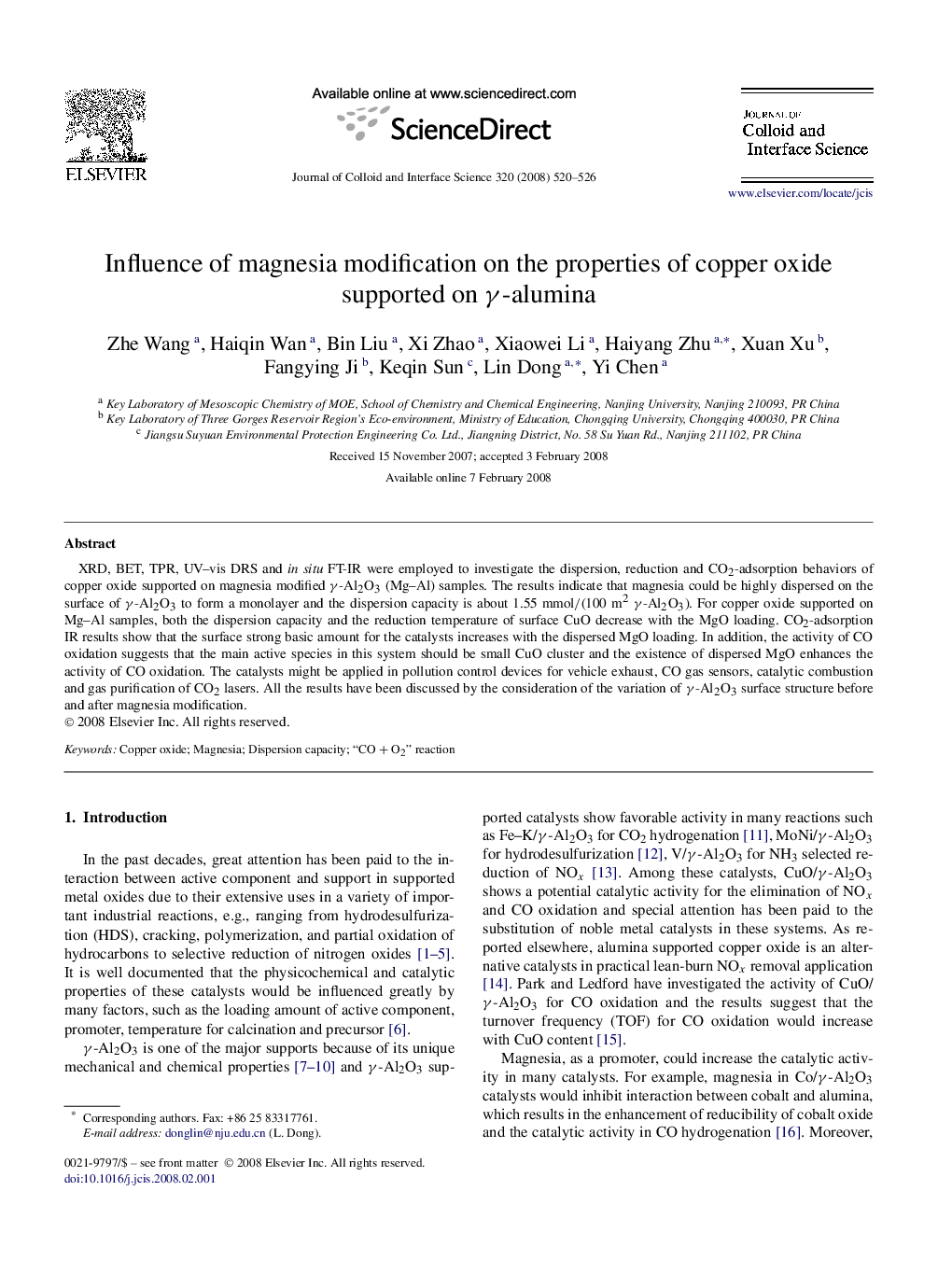| Article ID | Journal | Published Year | Pages | File Type |
|---|---|---|---|---|
| 611265 | Journal of Colloid and Interface Science | 2008 | 7 Pages |
XRD, BET, TPR, UV–vis DRS and in situ FT-IR were employed to investigate the dispersion, reduction and CO2-adsorption behaviors of copper oxide supported on magnesia modified γ-Al2O3 (Mg–Al) samples. The results indicate that magnesia could be highly dispersed on the surface of γ-Al2O3 to form a monolayer and the dispersion capacity is about 1.55 mmol/(100 m2γ-Al2O3). For copper oxide supported on Mg–Al samples, both the dispersion capacity and the reduction temperature of surface CuO decrease with the MgO loading. CO2-adsorption IR results show that the surface strong basic amount for the catalysts increases with the dispersed MgO loading. In addition, the activity of CO oxidation suggests that the main active species in this system should be small CuO cluster and the existence of dispersed MgO enhances the activity of CO oxidation. The catalysts might be applied in pollution control devices for vehicle exhaust, CO gas sensors, catalytic combustion and gas purification of CO2 lasers. All the results have been discussed by the consideration of the variation of γ-Al2O3 surface structure before and after magnesia modification.
Graphical abstractIn current experimental conditions, magnesia might preferentially incorporate into the surface octahedral vacant sites of γ-Al2O3. The properties of the catalysts (CuO/γ-Al2O3) are closely related to the magnesia loading amount.Figure optionsDownload full-size imageDownload as PowerPoint slide
